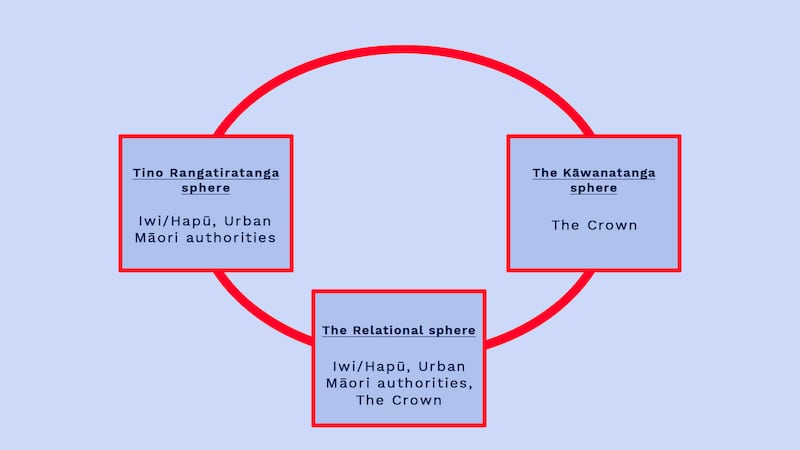Māori leaders have come up with a proposal for a distinctly Maōri body, Te Whare o te Rangatiratanga, to continue the momentum from Te Hīkoi mō te Tiriti, which saw more than 47,000 participants on its final day.
A working group set up during the national hui earlier this year has proposed Te Whare o te Rangatiratanga to unite Māori.
Ngāti Kahungūnu Chair, Bayden Barber, says Te Whare o te Rangatiratanga is about Māori, not the Beehive.
“He wā tōna ka kōrero tahi ki whare miere. Engari ko te mahi nui, kia tū ai tēnei whare, mō tātou ake."
Discussions with the beehive will happen eventually. But the big job will be establishing this house for us.
“A tōna wā ka kōrero tahi ki te Kāwanatanga. Nā te mea ko ngā taha e rua o te tiriti o Waitangi, ko ērā."
Then, we will speak to the government because that represents the dual aspects of Te Tiriti.
Ngāti Toa leader Helmut Moldik said the time had arrived to establish a new and historic whare Māori “where all of our people’s voices can be heard, where decisions can be made, and united action arise”.
“The presence of so many tāngata whenua and tāngata tiriti in support of Te Tiriti o Waitang at the hikoi is the vision for this land, a people united in honouring our past and walking into our future together,” Modlik said.
He described it as “the waka to carry us forward together when nationwide kaupapa requires it.”
The concept of Te Whare o te Rangatira came from a mixture of kaupapa and movements. This year, the conversation came about throughout the series of national hui, the first called by the late Kīngi Tūheitia at Tūrangawaewae in January, with the conversation continued at Rātana and Waitangi, Omahu and Tuahiwi hui.

Te Amorangi ki Mua Working Group was formed after the kotahitanga-focused Hui Taumata at Ōmahu marae of Ngāti Kahungunu in May where te Whare o Te Rangatiratanga was first proposed.
That came after Te Pāti Māori proposed a new Maōri parliament. But leaders there, including Kiingi Tuheitia, preferred to look for a more Māori solution. New Zealand has not had a Māori parliament since the late 19th century.
“What this hīkoi has done is bring to the fore the leadership of our rangatahi,” Ngāti Kahungunu chair Bayden Barber said.
“They are not only holding to account the government but also calling on our iwi Māori leaders to act.”
The working group has been meeting since the Hui Taumata and Barber said they want to get this kaupapa in front of the motu so, when hui happen in 2025, there is something tangible to discuss and debate.
“We can’t lose the momentum of the hīkoi and hui-ā-motu held thus far," Barber said.
Treaty lawyer and Te Arawa leader Annette Sykes said what had been affirmed in the process of hui and debate was that the constitutional authority and responsibilities of mana motuhake and tino rangatiratanga needed to be exercised on at least equal terms.
“What is also clear is that the institutions of Kīngitanga and kotahitanga build on these understandings to ensure our unity as hapū and iwi cements enduring relationships to be forged for the future wellbeing of our mokopuna.”
Te Whare o te Rangatira was also inspired by the thinking over many years with contributions from Te Ao Māori’s best thought leaders such as the late Moana Jackson, Margaret Mutu and Hone Sadler, the group said.
The 252 hui between 2012 and 2015, which ended up developing the Matire Mai Aotearoa Report also influenced Te Whare o te Rangatiratanga, which is consistent with the recommendations made in that report.
“Te Whakaputanga and Te Tiriti o Waitangi are the blueprints for a shared system of rangatiranga that moves from the colonial system of governing,” MāorI Womans Welfare League National President, Hope Tupara.
“When the first constitutional agreements of our country are realised and we remove the shackles of colonialism that harm wāhine Māori, we will see the full force of a vigorous Aotearoa and a thriving Māori.”
More information on Te Whare o Te Rangatira can be read here.


